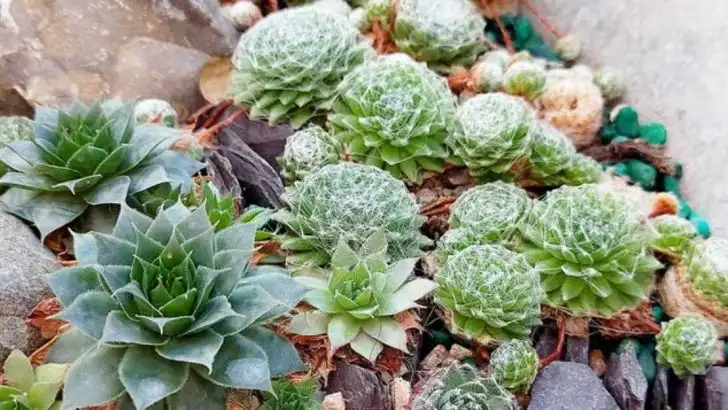In the Pacific Northwest, where wildfires are becoming an increasingly common threat, protecting your garden is more important than ever. Creating a fire-resistant garden is not only about choosing the right plants but also about creating a landscape that can help prevent fires from spreading to your home. With the right mix of plants, materials, and strategies, you can significantly reduce your risk while still enjoying a beautiful and thriving outdoor space.
In this article, we’ll guide you through 19 fire-resistant garden ideas that are perfect for the wildfire-prone Pacific Northwest. From drought-tolerant shrubs to fire-resistant ground covers, these plants can help create a natural barrier that minimizes the potential for flames to spread. Whether you’re looking to revamp your existing garden or start from scratch, these tips and plant suggestions will provide peace of mind in your fire-prone area.
Succulent Haven
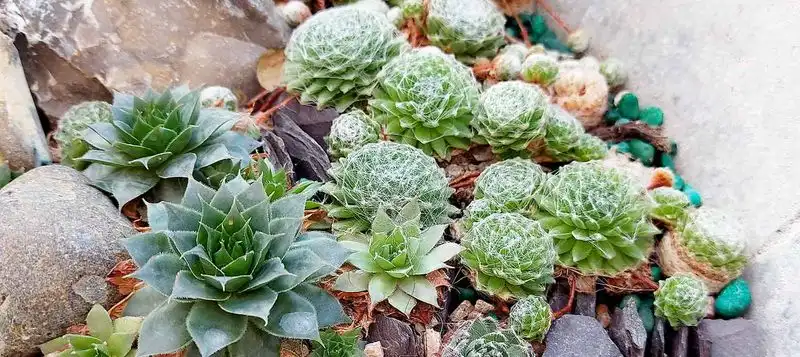
Succulents are champions in fire-prone areas. Their fleshy leaves store water, making them naturally fire-resistant. Group various types like Echeveria and Sedum to create a textured oasis. These plants require minimal water, ideal for dry summers. Position them in raised beds or rock gardens for added visual appeal. The garden will thrive with minimal maintenance, offering peace of mind and beauty. Plus, their vibrant colors add a unique charm, contrasting wonderfully with traditional garden greenery. By incorporating gravel paths, you further enhance fire resistance while adding a modern touch.
Herb Sanctuary
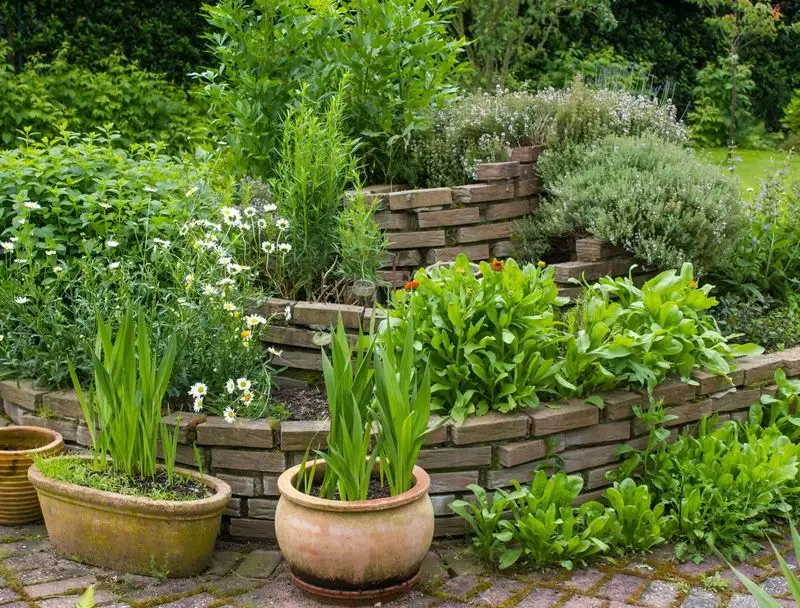
Herbs not only flavor our dishes but can also protect our homes. Lavender, rosemary, and sage are not only aromatic but also fire-resistant. Their oils repel pests and provide a calming scent. Plant them near pathways for easy access and to enjoy their fragrance. These herbs thrive in well-drained soil, making them perfect for the Pacific Northwest. Interspersing them with colorful flowers can add vibrancy and diversity. Regular pruning keeps them healthy and further reduces fire risk. This sanctuary offers both culinary and protective benefits, ensuring it’s a garden worth cultivating.
Native Plant Retreat
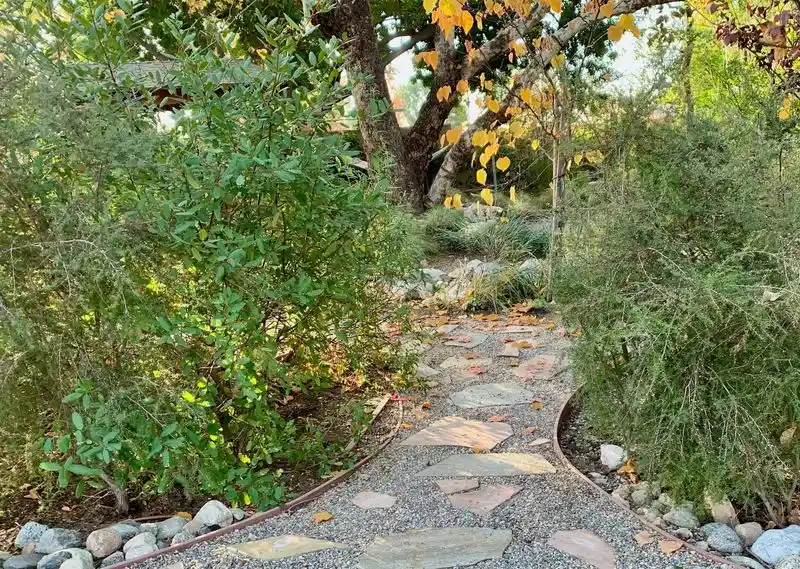
Embrace the natural wonders of the region by using native plants. They’re adapted to the local climate, requiring less water and care. Ferns, Oregon grape, and salal are excellent choices. These plants create a lush, green backdrop and are naturally fire-resistant. A small water feature or stream can add tranquility and a cooling effect. Native plants support local wildlife, encouraging biodiversity. This retreat is not only visually stunning but environmentally friendly. By leaning on nature’s wisdom, you cultivate a resilient landscape that stands strong against wildfires.
Rocky Terrain Garden
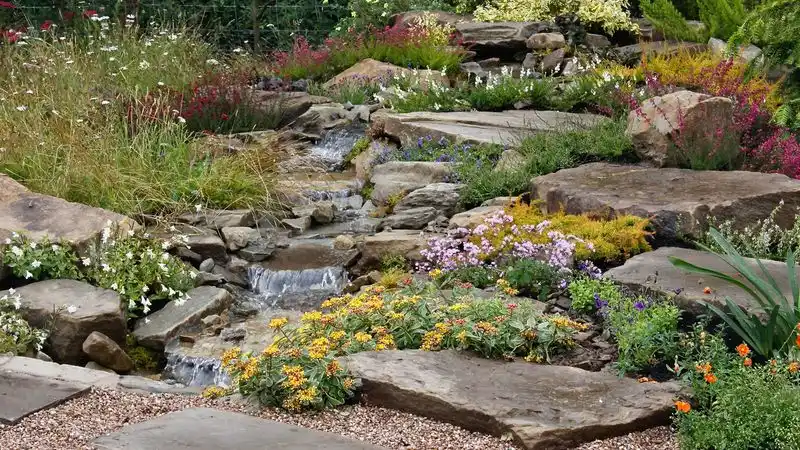
Rock gardens offer a unique aesthetic and practical benefits. Incorporating hardy plants like yucca and ornamental grasses reduces fire risk. These plants thrive in rocky, well-drained soils, common in the Pacific Northwest. The use of stones and boulders acts as a natural firebreak, slowing any advancing flames. Adding colorful wildflowers like blanket flower and penstemon enhances beauty while supporting pollinators. This garden requires little watering, making it sustainable and low-maintenance. It’s perfect for homeowners seeking a natural yet protective landscape. The combination of textures and colors creates an engaging visual tapestry.
Mediterranean Escape
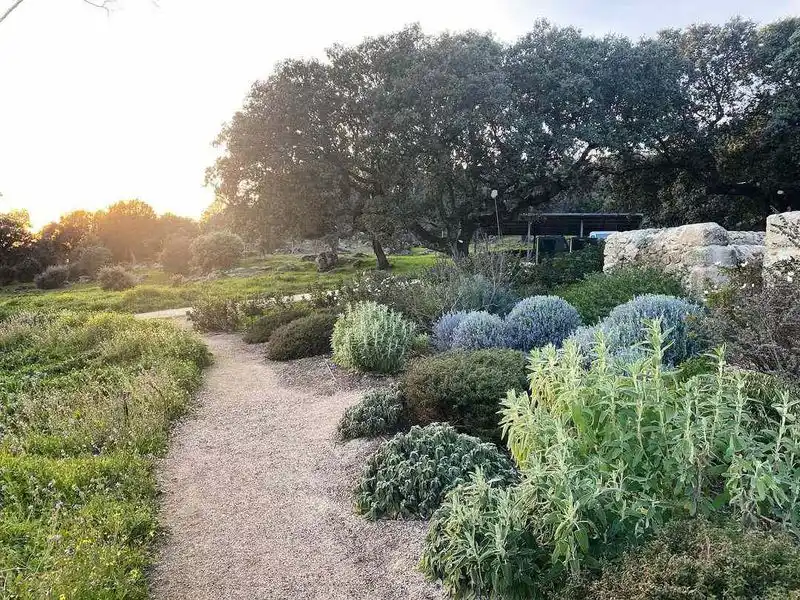
Drawing inspiration from the Mediterranean, this garden focuses on drought-tolerant and fire-resistant plants. Olive trees, lavender, and thyme are key features, thriving in dry conditions. Their silvery foliage reflects sunlight, reducing leaf temperature and fire risk. Terracotta pots add a rustic touch, ideal for patios or terraces. The warm palette creates a welcoming atmosphere, perfect for entertaining. This escape is both beautiful and functional, designed to withstand the challenges of the Pacific Northwest. It’s a paradise that combines style with practicality, offering a slice of the Mediterranean at home.
Edible Firebreak
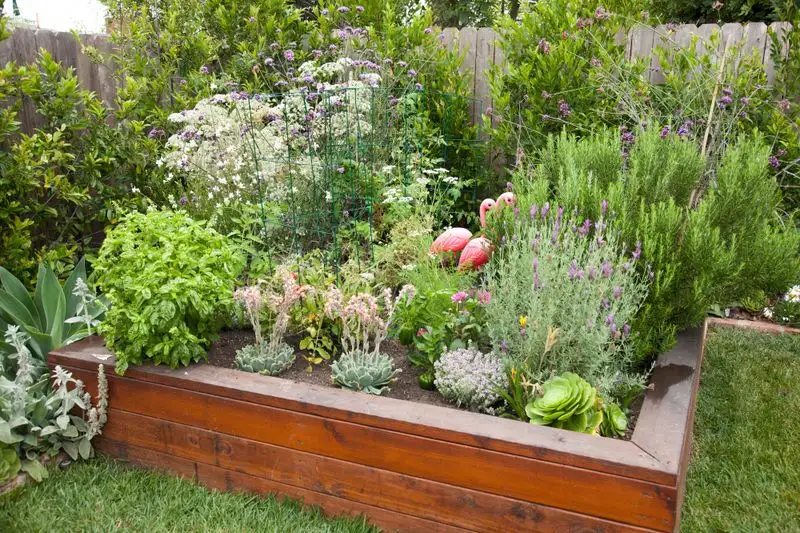
Why not enjoy fresh produce while protecting your property? An edible firebreak features plants like blueberries, currants, and fruit trees. These plants have high moisture content, naturally resisting fires. Plant them in rows or clusters, bordered by gravel paths for added safety. The garden provides delicious fruits while acting as a protective barrier. Regular watering ensures plants remain lush and fire-resistant. It’s a practical solution that combines food production with safety, perfect for families. This garden supports a sustainable lifestyle, offering nourishment and peace of mind in fire-prone areas.
Water-Wise Oasis

Water-wise gardens are essential in regions facing dry spells. Agave, yucca, and ornamental grasses are excellent fire-resistant options. These plants require minimal water, thriving even in drought. A small pond or water feature adds tranquility, creating a haven for wildlife. This oasis stands resilient against fires, offering both beauty and practicality. Encouraging efficient water use, it’s an eco-friendly choice for homeowners. The combination of textures and colors creates a striking visual effect, ensuring the garden remains a focal point year-round. It’s a sustainable retreat, perfect for modern eco-conscious living.
Cactus Corner
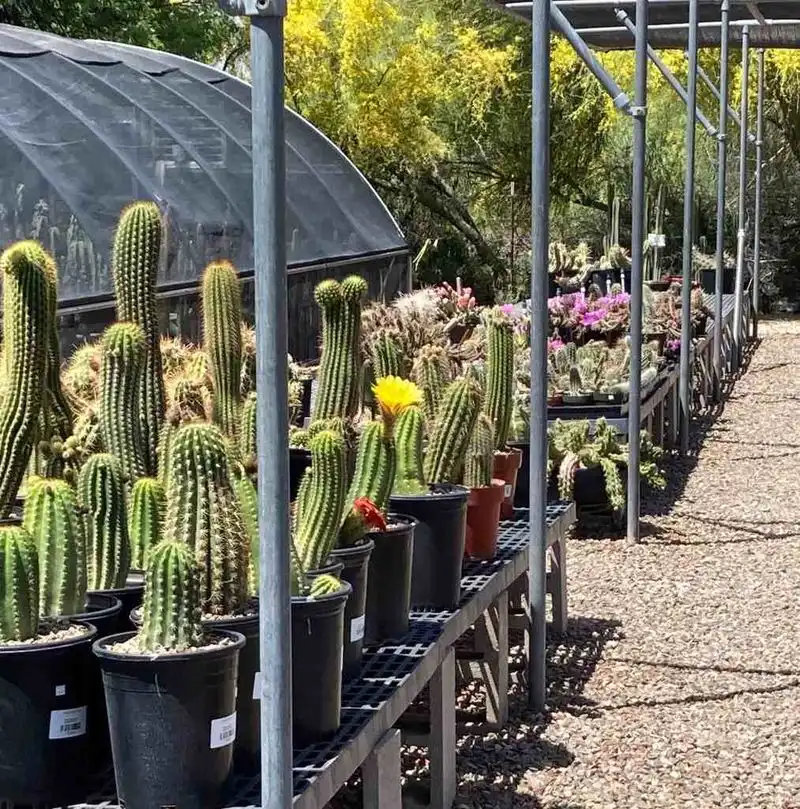
Cacti are synonymous with resilience. Their thick, water-storing bodies make them fire-resistant stars in any garden. Position them in a sunny corner, surrounded by rocks and gravel for a desert-like feel. These plants require minimal care, thriving in neglect, making them perfect for busy homeowners. Intermix with succulents for added variety and color. The garden offers a unique visual appeal with its modern, rugged charm. This corner becomes a conversation piece, showcasing nature’s adaptability. It’s a testament to survival against harsh conditions, providing inspiration and protection throughout the seasons.
Woodland Wonderland
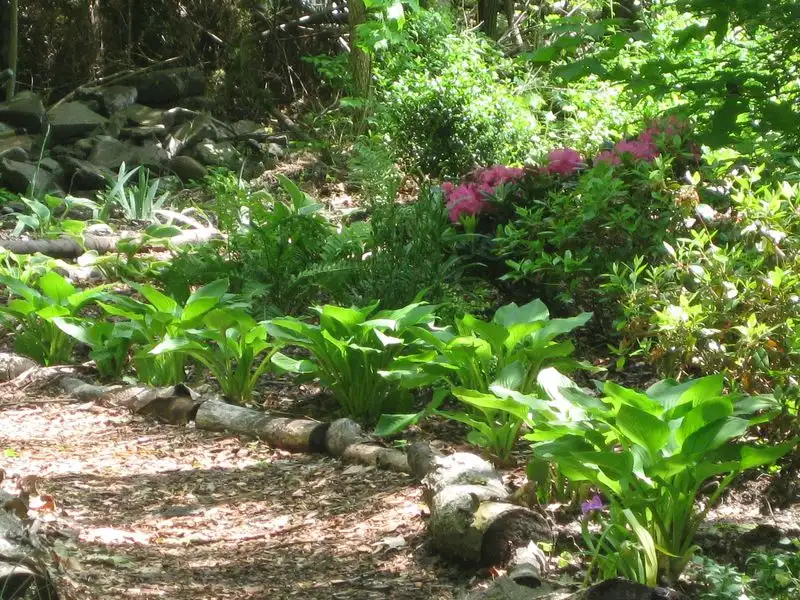
Creating a woodland garden offers a serene escape from everyday life. Utilizing shade-tolerant plants like ferns, hostas, and heucheras creates a fire-resistant haven. These plants thrive under the canopy of trees, creating a layered effect. Incorporate soft pathways with bark mulch to enhance fire resistance and add a natural feel. The garden supports local wildlife, offering shelter and food. It’s a magical space, perfect for quiet reflection or leisurely strolls. By working with nature’s architecture, you craft a sanctuary that’s both enchanting and protective, standing as a testament to nature’s beauty and strength.
Colorful Xeriscape
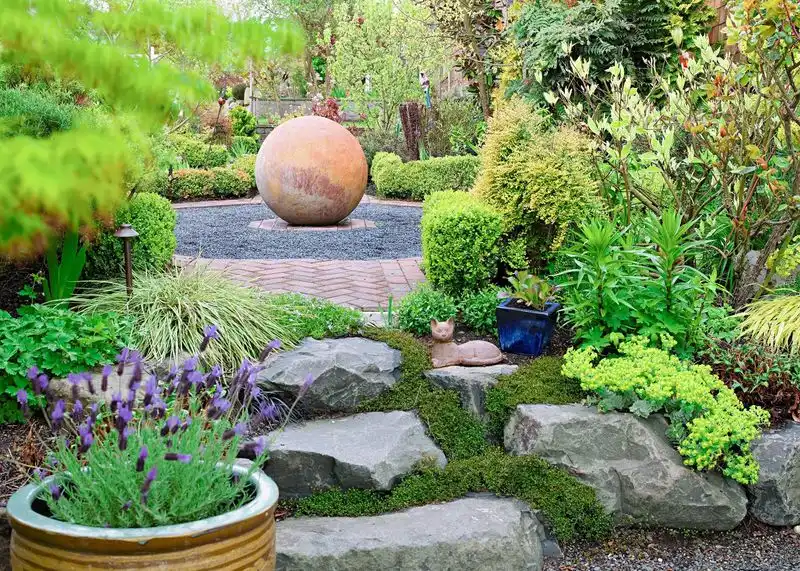
Xeriscaping is all about water conservation and aesthetic appeal. Use drought-tolerant plants like lavender, sedums, and wildflowers. These plants create a colorful tapestry that’s both fire-resistant and attractive. Incorporate decorative stones and gravel to improve drainage and add texture. This garden requires minimal watering, making it ideal for the Pacific Northwest’s dry spells. It’s a vibrant landscape that supports pollinators, adding life and movement. By choosing native and adapted plants, you ensure the garden remains resilient and low-maintenance. This approach offers a practical, beautiful solution to the challenges of dry, fire-prone climates.
Alpine Refuge
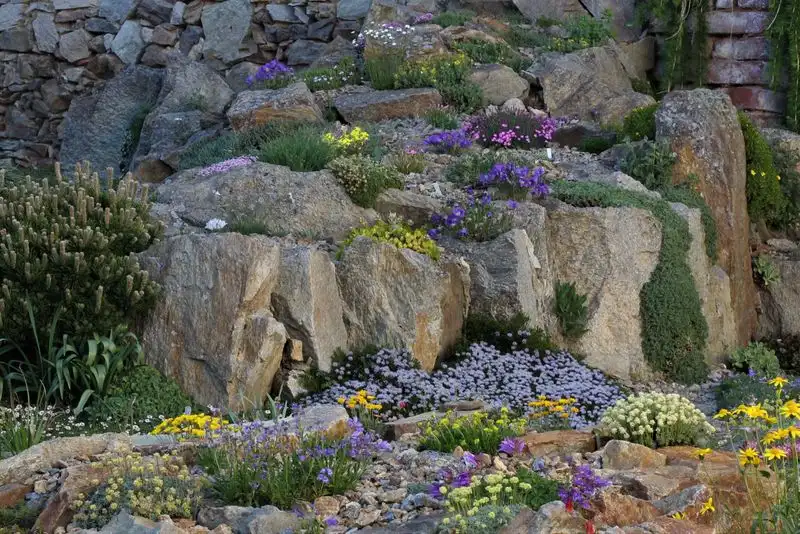
Inspired by high-altitude environments, alpine gardens feature plants adapted to harsh conditions. Dwarf conifers, alpine asters, and saxifrage are excellent choices. These plants are fire-resistant, thriving in well-drained, rocky soils. Incorporate rock formations to mimic natural landscapes, adding interest and structure. The garden requires little water, perfect for sustainability. It offers a unique aesthetic, blending rugged beauty with practicality. This refuge attracts wildlife, providing shelter and sustenance. It stands as a reminder of nature’s resilience, offering a peaceful retreat. By embracing alpine elements, you create a garden that defies adversity with grace and charm.
Rain Garden Delight

Rain gardens capture and utilize rainwater, reducing runoff and erosion. Choose native plants like red osier dogwood and swamp milkweed, which thrive in wet conditions and are fire-resistant. Position the garden in a natural depression or slope, allowing water to collect and slowly infiltrate the soil. This design protects your property while promoting groundwater recharge. The garden offers seasonal beauty, attracting birds and butterflies. It’s a smart choice for the Pacific Northwest, addressing both fire and water challenges. By harnessing nature’s cycles, you create a dynamic landscape that’s both functional and beautiful.
Evergreen Paradise
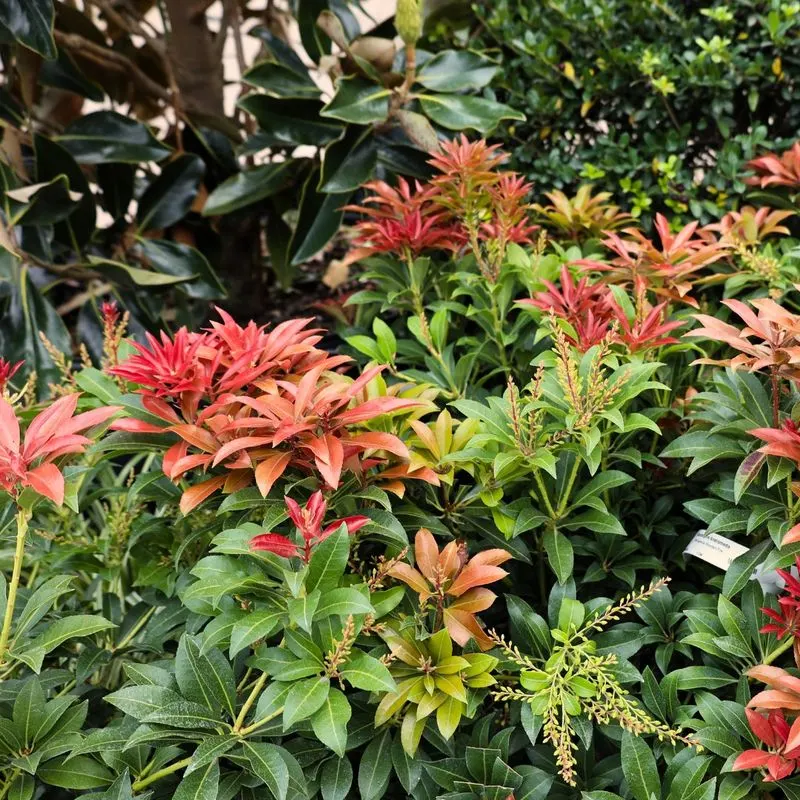
Evergreens offer year-round beauty and resilience. Choose varieties like juniper, pine, and cedar for their fire-resistant qualities. These plants retain moisture, reducing susceptibility to fires. Arrange them in layers to create depth and visual interest. The garden provides shelter for wildlife while adding structure to your landscape. With minimal maintenance, it remains verdant throughout the seasons. This paradise acts as a natural shield, enhancing safety and aesthetic appeal. By focusing on evergreens, you ensure your garden withstands time and elemental challenges. It’s a timeless design that offers both tranquility and protection.
Zen Dry Garden
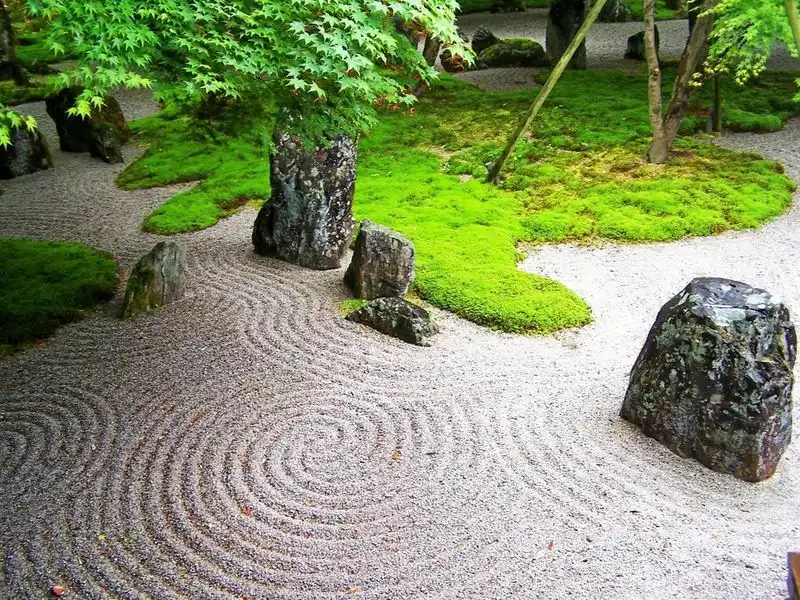
Zen gardens emphasize simplicity and meditation. Use raked gravel and strategically placed rocks to create serene patterns. Incorporate fire-resistant plants like junipers and ornamental grasses for greenery and texture. These elements combine to form a peaceful retreat that’s easy to maintain. The garden requires minimal water, perfect for dry conditions. It encourages mindfulness, offering a space for reflection and calm. This design blends aesthetics with practicality, ensuring it’s both beautiful and functional. By embracing Zen principles, you create a garden that offers a respite from daily stresses while standing resilient against nature’s challenges.
Seasonal Meadow
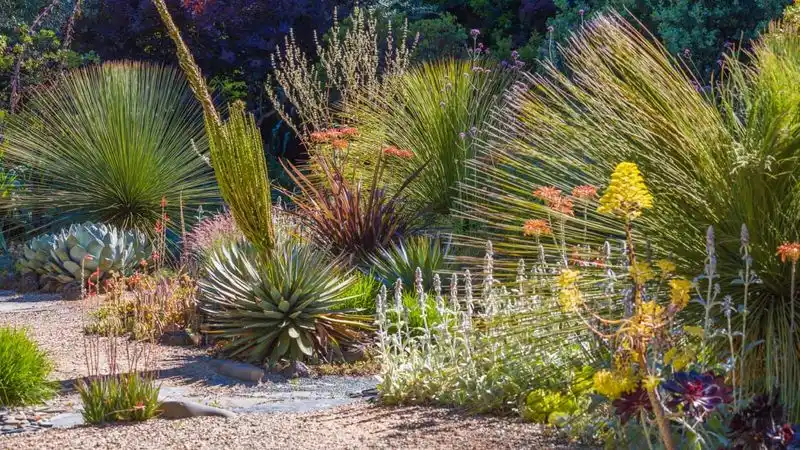
Meadows provide habitat diversity and require little upkeep. Choose fire-resistant grasses and wildflowers that bloom in various seasons. This approach ensures continuous color and interest. The garden supports pollinators and offers an open, airy feel. Add benches to encourage relaxation and enjoyment of the scenery. This meadow is a dynamic landscape, changing with the seasons while providing natural fire barriers. It’s an ideal choice for large properties, offering beauty and practicality. By using native and adapted plants, you enhance the garden’s resilience, making it a sustainable choice for the Pacific Northwest.
Formal Courtyard
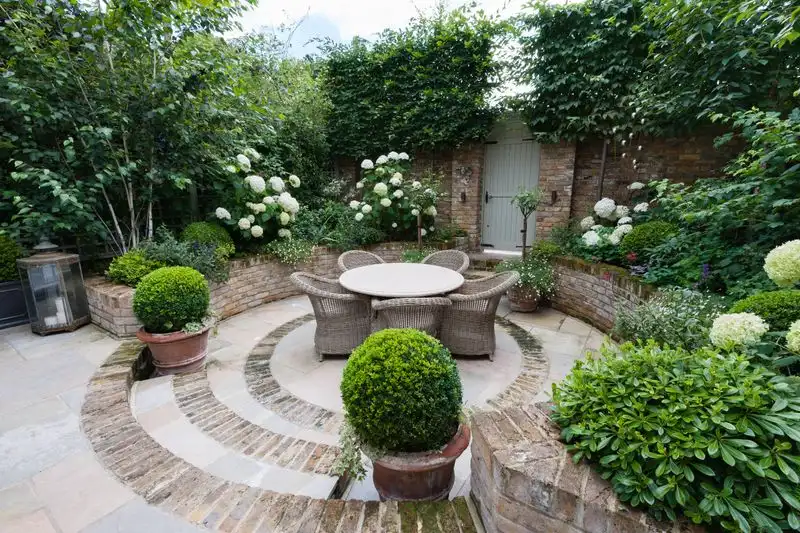
Formal gardens offer elegance and order. Use symmetrical hedges like boxwood and fire-resistant topiary for structure. These plants create defined pathways and focal points. A central fountain adds a classic touch, providing a sense of tranquility. The garden requires regular maintenance but rewards with unmatched beauty and sophistication. Choose fire-resistant plant varieties to enhance safety without sacrificing style. This courtyard becomes an outdoor extension of your living space, perfect for gatherings. By blending formal design with practical plant choices, you achieve a harmonious balance, suitable for both relaxation and protection.
Tropical Getaway
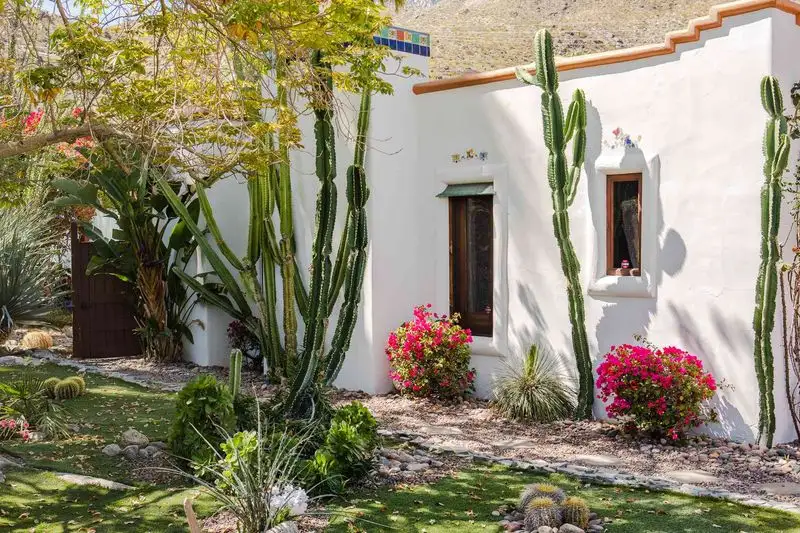
Escape to a tropical paradise without leaving home. Use hardy palms and fire-resistant groundcovers like lantana to create an exotic feel. These plants thrive in warm, sunny conditions, common in sheltered Pacific Northwest spots. A tiki-style seating area adds a fun, casual element. This getaway offers an inviting space for relaxation and socializing. By choosing tough, adaptable plants, you ensure the garden remains vibrant and fire-resistant. This design blends adventure with security, offering a taste of the tropics in your backyard. It’s a carefree yet mindful approach to gardening in fire-prone areas.
Rustic Vineyard
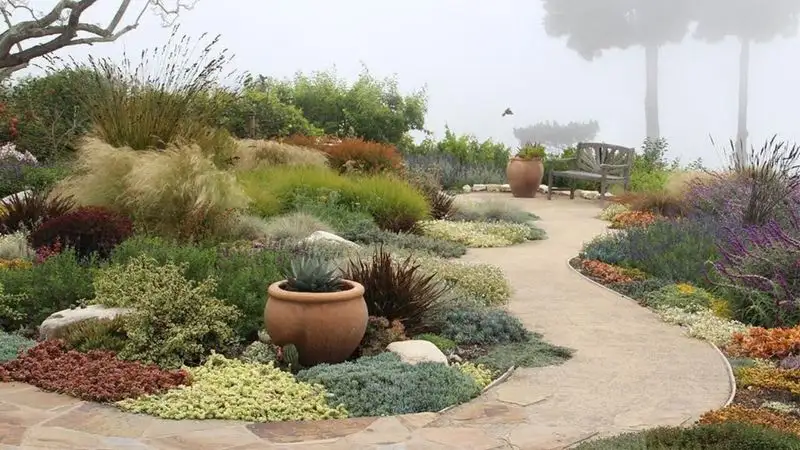
Cultivate your own vineyard for a touch of rustic charm. Grapevines are surprisingly fire-resistant, with high moisture content in their leaves. Plant them in neat rows with rustic trellises for support. The vineyard offers more than just grapes; it creates a scenic escape with a touch of elegance. A small tasting area adds a social aspect, perfect for gatherings. By focusing on grapevines, you craft a garden that’s both productive and protective. It’s a lifestyle choice that marries beauty with functionality, offering a unique way to enjoy and protect your property in fire-prone regions.
Shaded Serenity

Shaded gardens offer respite from the heat and a natural fire barrier. Use large trees like maples and understory shrubs for structure. The dense foliage provides shade and retains moisture, reducing fire hazards. A gentle brook adds a soothing element, enhancing the tranquil atmosphere. This garden supports a diverse ecosystem, offering habitat for various species. It’s a serene escape, perfect for quiet contemplation or family picnics. By working with shade-loving plants, you create a landscape that’s both beautiful and practical, standing strong against fire threats. It’s a harmonious blend of nature’s gifts, ensuring peace and safety.

